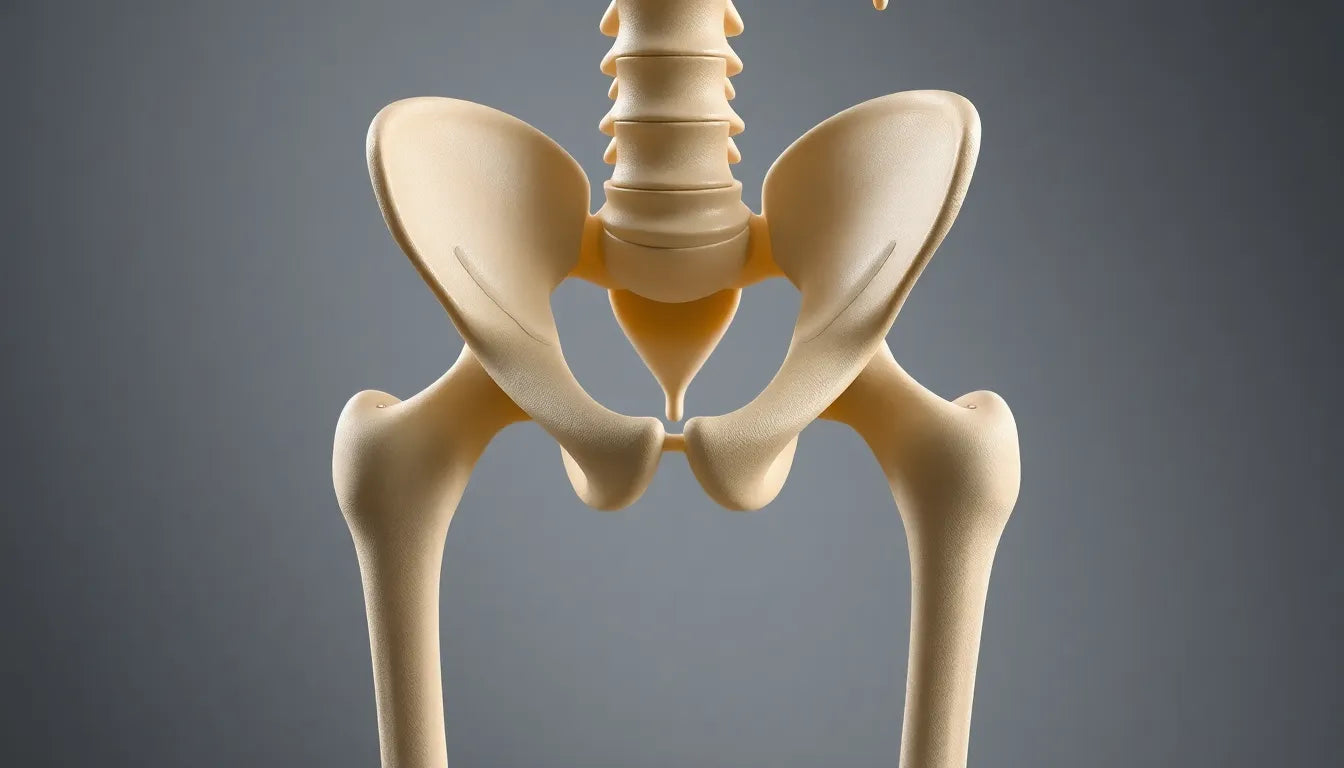The iliac crest, often overlooked, plays a crucial role in the structure and function of the human body. As the superior curved border of the ilium, which is the largest bone of the pelvis, the iliac crest serves as a major skeletal landmark. This prominent ridge is not just a structural component; it is a hidden support system integral to both everyday activities and medical procedures.
understanding the iliac crest's importance
Located at the top of the ilium, the iliac crest forms the upper boundary of the pelvis and is easily palpable, making it an essential reference point in medical assessments. When you place your hands on your hips, you are touching the iliac crest. This bone structure is fundamental to maintaining the body's structural integrity, providing support and attachment for various muscles and ligaments that facilitate movement and stability.
For those interested in anatomy, injury prevention, and pain management, understanding the iliac crest is vital. Medical professionals rely on this anatomical feature for numerous procedures and assessments, underscoring its significance in clinical settings. From serving as a landmark for lumbar punctures to being a preferred site for bone marrow harvesting, the iliac crest's clinical importance cannot be overstated.
exploring the iliac crest's role
This blog post aims to delve into the anatomical details, clinical significance, and practical applications of the iliac crest. By unlocking the secrets of this hidden support system, we can better appreciate its role in our daily lives and medical practices. Whether you're a healthcare professional, a student of anatomy, or simply someone curious about the human body's intricacies, understanding the iliac crest offers valuable insights into how our bodies function and maintain balance.
In the following sections, we will explore the iliac crest's anatomy and location, its function and muscle attachments, and its clinical applications. By the end of this exploration, you'll have a comprehensive understanding of why the iliac crest is a cornerstone of both anatomical study and medical practice.
anatomy and location of the iliac crest
The iliac crest forms the upper border of the ilium, extending from the anterior superior iliac spine (ASIS) to the posterior superior iliac spine (PSIS). This prominent ridge is easily palpable, making it a key skeletal landmark often referenced in medical assessments, such as the "put your hands on your hips" technique. Its location and structure not only provide a framework for the pelvis but also serve as a critical point of reference for various clinical procedures.
function and muscle attachments
The iliac crest is more than just a structural component; it serves as an attachment site for numerous muscles that play vital roles in movement and stability. These include the abdominal external and internal obliques, which are essential for trunk rotation and lateral flexion, and the transversus abdominis, which provides core stability. Additionally, the quadratus lumborum, latissimus dorsi, and gluteus maximus attach to the iliac crest, contributing to the movement of the trunk and lower limbs. The tensor fasciae latae and sartorius muscles also find their origins here, aiding in hip flexion and stabilization. The iliac crest's role in dividing the abdominal and pelvic cavities underscores its importance in maintaining the structural integrity of the human body.
clinical significance of the iliac crest
The iliac crest is not only significant for its anatomical features but also for its clinical applications. It contains red bone marrow, making it a preferred site for bone marrow or bone tissue harvests used in transplantation and grafting. This feature is crucial for patients requiring bone marrow transplants, as the iliac crest provides a readily accessible and rich source of marrow. Furthermore, the iliac crest serves as a landmark for medical procedures, such as lumbar punctures, by marking the level of the L4 vertebra. This "intercristal line" is essential for clinicians to accurately perform procedures that require precise vertebral localization.
educational tools and resources
Understanding the iliac crest's anatomy and clinical significance can be greatly enhanced through the use of visual aids and educational tools. Diagrams and 3D models offer detailed views of the iliac crest and its surrounding structures, facilitating a deeper comprehension of its role and importance. Palpation guides are particularly useful for students and professionals alike, providing hands-on experience in locating and identifying the iliac crest. Additionally, online resources, including interactive quizzes and virtual anatomy labs, offer opportunities for further learning and exploration of this critical anatomical feature.
As we continue to explore the iliac crest's role in the human body, it becomes evident that this hidden support system is integral to both everyday function and medical practice. By understanding its anatomy, muscle attachments, and clinical applications, we gain valuable insights into how the iliac crest contributes to our overall health and well-being. Whether you're a medical professional, student, or simply curious about the human body, the iliac crest offers a fascinating glimpse into the complexities of our anatomical structure.
practical applications of the iliac crest
The iliac crest's proximity to the skin makes it an invaluable anatomical landmark in various medical interventions. Due to its accessible location, the iliac crest is often used in procedures such as bone marrow biopsies and grafting. The ease of access to this bone structure allows for efficient extraction of bone marrow, which is crucial for patients requiring transplants. Its role as a landmark for lumbar punctures further emphasizes its clinical importance, guiding practitioners to the correct vertebral level for safe and effective procedures.
Beyond its clinical applications, understanding the iliac crest can significantly impact ergonomic design and pain management strategies. The iliac crest serves as an anchor point for numerous muscles that are integral to posture and movement. By recognizing its anatomical significance, designers can create ergonomic products, such as chairs and workstations, that support the body's natural alignment and reduce strain on these muscle groups. This understanding also informs therapeutic approaches for managing lower back pain and improving mobility, as interventions can be tailored to address issues related to the iliac crest and its associated structures.

Lumbar support belt
Provides adjustable lower back support and relief for pain and tension.
frequently asked questions
What is the iliac crest?
The iliac crest is the upper curved edge of the ilium, the largest bone in the pelvis. It forms the top border of the pelvis and is a prominent skeletal landmark.
What muscles attach to the iliac crest?
Several muscles attach to the iliac crest, including the external and internal obliques, transversus abdominis, quadratus lumborum, latissimus dorsi, gluteus maximus, tensor fasciae latae, and sartorius. These muscles play crucial roles in movement and stability.
Why is the iliac crest clinically significant?
The iliac crest is clinically significant because it serves as a landmark for medical procedures like lumbar punctures and is a preferred site for bone marrow harvesting. Its accessibility and location make it vital for these interventions.
How can I locate my iliac crest?
You can locate your iliac crest by placing your hands on your hips. The iliac crest is the prominent bone you feel under your hands.
What role does the iliac crest play in posture and movement?
The iliac crest provides attachment points for muscles that support posture and facilitate movement. Its structural role helps maintain the body's alignment and balance, contributing to overall mobility and stability.
In conclusion, the iliac crest is more than just a structural component of the pelvis; it is a critical support system that plays a vital role in both clinical settings and everyday life. From serving as a landmark for medical procedures to influencing ergonomic design and pain management, the iliac crest's significance cannot be overstated. Understanding this hidden support system enhances our appreciation of the body's intricate anatomy and its impact on health and well-being.

Men's Posture Shirt™ - Black
Patented shirt designed to activate muscles, improve posture, and help relieve pain.
Kilder
- Wikipedia Contributors. "Iliac Crest." Wikipedia, The Free Encyclopedia.
- "Iliac Crest Anatomy." Innerbody Research.
- "Iliac Crest." Kenhub.
- Author Unknown. "Clinical Applications of the Iliac Crest." National Center for Biotechnology Information.
- "What to Know About the Iliac Crest." Medical News Today.
- "Iliac Crest Key Terms." Fiveable.
- "Iliac Crest Reconstruction Techniques." AO Surgery Reference.


















